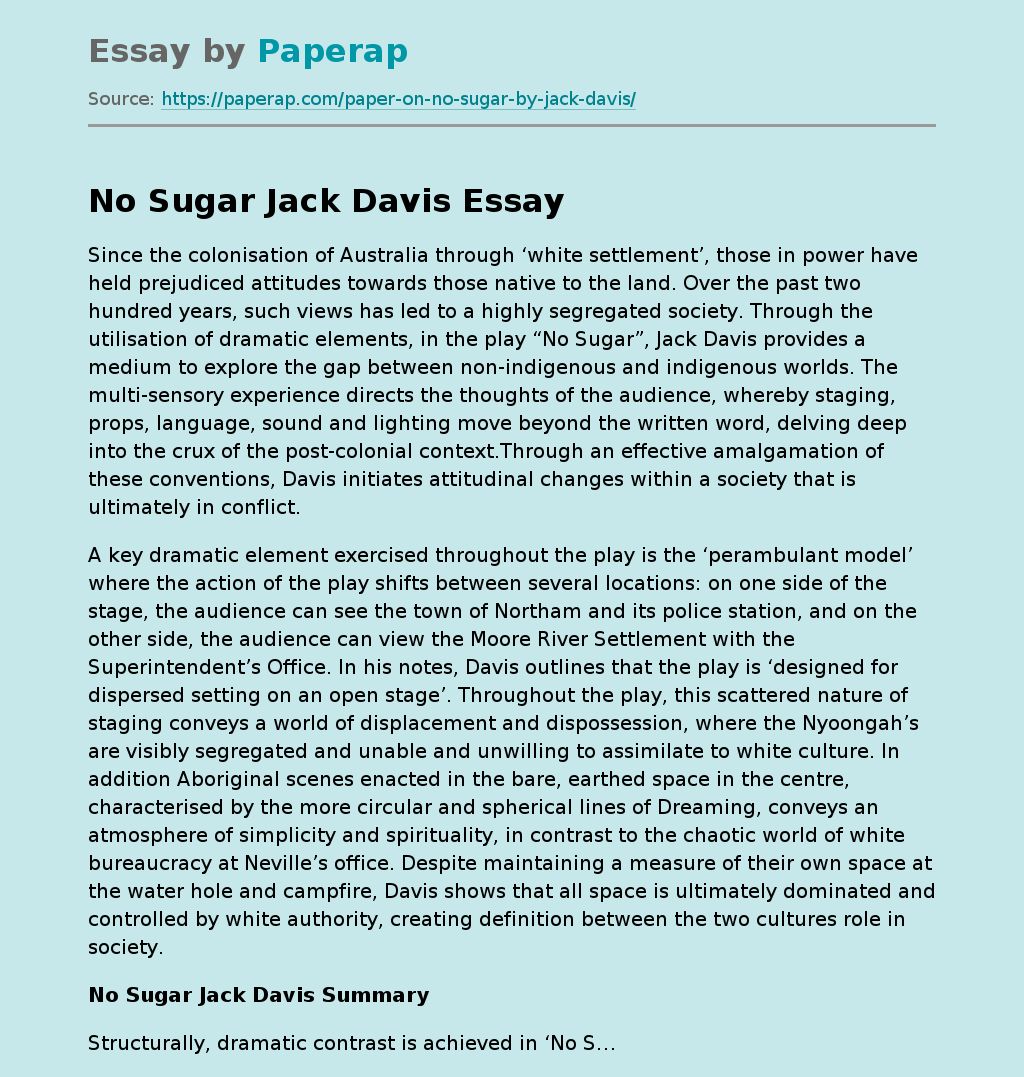No Sugar Jack Davis
Since the colonisation of Australia through ‘white settlement’, those in power have held prejudiced attitudes towards those native to the land. Over the past two hundred years, such views has led to a highly segregated society. Through the utilisation of dramatic elements, in the play “No Sugar”, Jack Davis provides a medium to explore the gap between non-indigenous and indigenous worlds. The multi-sensory experience directs the thoughts of the audience, whereby staging, props, language, sound and lighting move beyond the written word, delving deep into the crux of the post-colonial context.
Through an effective amalgamation of these conventions, Davis initiates attitudinal changes within a society that is ultimately in conflict.
A key dramatic element exercised throughout the play is the ‘perambulant model’ where the action of the play shifts between several locations: on one side of the stage, the audience can see the town of Northam and its police station, and on the other side, the audience can view the Moore River Settlement with the Superintendent’s Office.
In his notes, Davis outlines that the play is ‘designed for dispersed setting on an open stage’. Throughout the play, this scattered nature of staging conveys a world of displacement and dispossession, where the Nyoongah’s are visibly segregated and unable and unwilling to assimilate to white culture. In addition Aboriginal scenes enacted in the bare, earthed space in the centre, characterised by the more circular and spherical lines of Dreaming, conveys an atmosphere of simplicity and spirituality, in contrast to the chaotic world of white bureaucracy at Neville’s office.
Despite maintaining a measure of their own space at the water hole and campfire, Davis shows that all space is ultimately dominated and controlled by white authority, creating definition between the two cultures role in society.
No Sugar Jack Davis Summary
Structurally, dramatic contrast is achieved in ‘No S…
No Sugar Jack Davis. (2019, Dec 05). Retrieved from https://paperap.com/paper-on-no-sugar-by-jack-davis/

